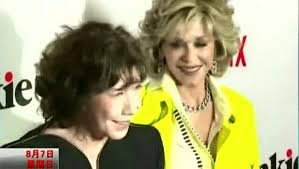Early birds may have been too hefty to sit on their eggs
Birds that lived at the time of the dinosaurs might have been too heavy to sit on clutches of eggs without breaking them, according to an analysis of primitive avian fossils. The findings suggest that incubation might be a defining feature of modern birds, evolving only in the past 100 million years.
Some palaeontologists have criticized the study, in part because the idea flies in the face of evidence that some non-avian dinosaurs closely related to birds sat atop nests on the ground. The accepted view by many researchers was that some dinosaurs were already brooding nests to incubate their eggs, which would suggest that the behaviour evolved long before the proliferation of modern groups of birds, following a mass-extinction event 66 million years ago.
Many fossils of early birds have been discovered in the past three decades 鈥?particularly in China 鈥?but direct evidence of their reproductive behaviour has been elusive, says palaeontologist Charles Deeming at the University of Lincoln, UK, who led the analysis.
锘縀gg extrapolation
Most birds today incubate their eggs by sitting on them. To test whether the behaviour was common in birds living in the Cretaceous and Upper Jurassic periods, Deeming and his collaborator Gerald Mayr estimated the size and load-bearing capacity of the eggs of 21 species of primitive bird, including Confuciusornis and Yanornis and one of the oldest of all birds, Archaeopteryx, which lived about 150 million years ago.
Previous work had shown that modern birds evolved a more open pelvis, which would have allowed the size of their eggs to increase over time, says Mayr, who is at the Senckenberg Research Institute and Natural History Museum Frankfurt in Germany. In early birds, pelvic bones were fused, creating a canal that limited egg size. Given they had no fossil eggs to measure, the scientists measured the pelvic-canal width to estimate the likely size and mass of each species鈥欙豢 eggs. They then calculated the load mass of each egg 鈥?the maximum weight that they could bear without breaking.
The pair found that for every species tested, the load mass of its eggs would have been too low to support the weight of an adult. 鈥淚f that鈥檚 the case, those birds can鈥檛 sit on those eggs without real threat of destroying them,鈥?Deeming says. Some species, such as Confuciusornis, had a mass more than three times what the eggs could have supported, according to the study, which was published last month in the Journal of Evolutionary Biology1.
Modern birds, by contrast, lay eggs that can often accommodate three times the body mass of the adult, Deeming says. Based on that, the authors argue that contact incubation 鈥?sitting on eggs 鈥?evolved late in the history of modern birds, possibly after the emergence of a more open pelvis in the past 100 million years or so.
Deeming says that studies of the few species of dinosaurs whose fossils suggest they brooded their eggs are not definitive. For example, famous fossils of oviraptorids in the Gobi Desert have been found tucked up near their eggs, but they are likely to have been guarding nest mounds, similar to crocodylians, rather than incubating eggs the way modern birds do, he says.
Dinosaur debate
Jingmai O鈥機onnor, an Cretaceous-bird specialist at the Institute of Vertebrate Paleontology and Paleoanthropology in Beijing, says that the study confirms what she and some other researchers have long inferred about the late development of contact incubation: 鈥淚"m sure that early birds were too heavy to incubate in the same manner as living birds.鈥?But the statistical support for the findings is not conclusive, she warns, because it is based on many assumptions and unknown variables, such as the precise shape of these birds鈥?eggs.
O鈥機onnor agrees that dinosaurs fossilized with nests might have been protecting rather than incubating their eggs. As with many aspects of modern bird behaviour, 鈥渄erived brooding behaviours evolved in a step-wise fashion, culminating with the full contact incubation observed in living birds鈥? she says.
Palaeontologist David Varricchio, who studies dinosaur and bird reproduction at Montana State University in Bozeman, says that he likes the study鈥檚 approach, but is surprised that the authors calculated egg sizes to be one-tenth to one-fifth of what you would expect for a similar-sized bird today. 鈥淭here would have to be a huge increase in relative egg size鈥?at the base of the branch of modern birds on the evolutionary tree, he says. 鈥淪o, something seems out of whack here.鈥?/p>
Luis Chiappe, director of the Dinosaur Institute at the Natural History Museum of Los Angeles County in California, challenges the study鈥檚 suggestion that early birds might have nested on the ground rather than in trees. Knowledge of the enantiornithines, one of three groups of primitive birds examined in the study, suggests that they lived in trees, he says. 鈥淚f you live in a tree, most likely you nest in a tree. And if you nest in a tree, I don"t see how these eggs could have been incubated if it"s not by contact with a parent.鈥?/p>
Hatchlings might have been found in trees, says Deeming, but that doesn鈥檛 mean adults nested in them. He and Mayr believe contact incubation might have been a key innovation that was responsible for the success of modern birds, and might explain why only their ancestors survived, while other early groups of birds perished in the extinction event.











